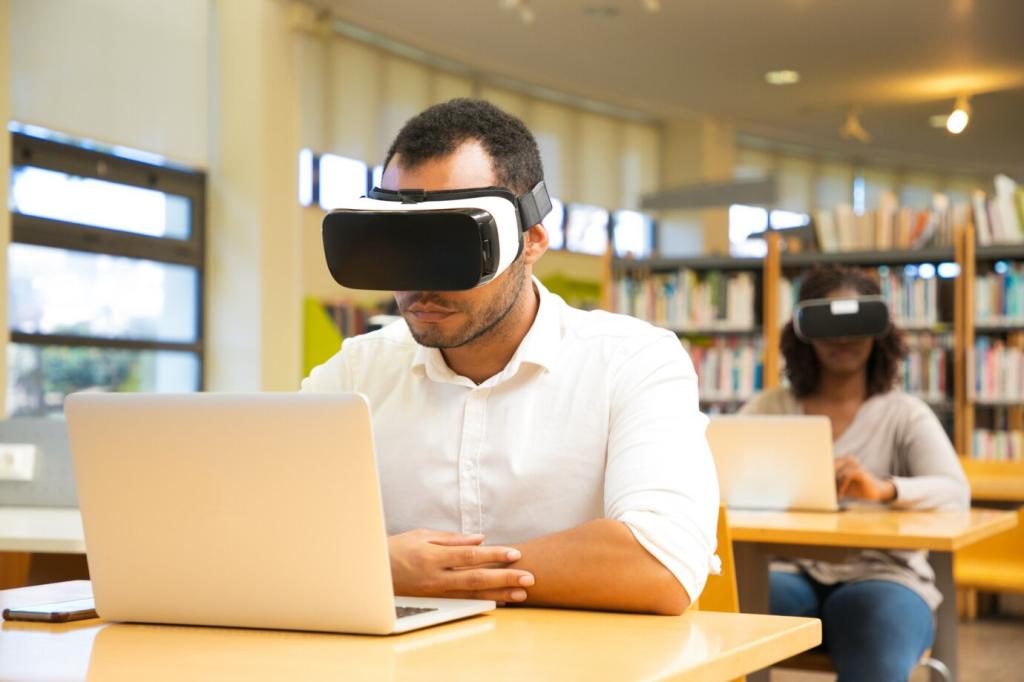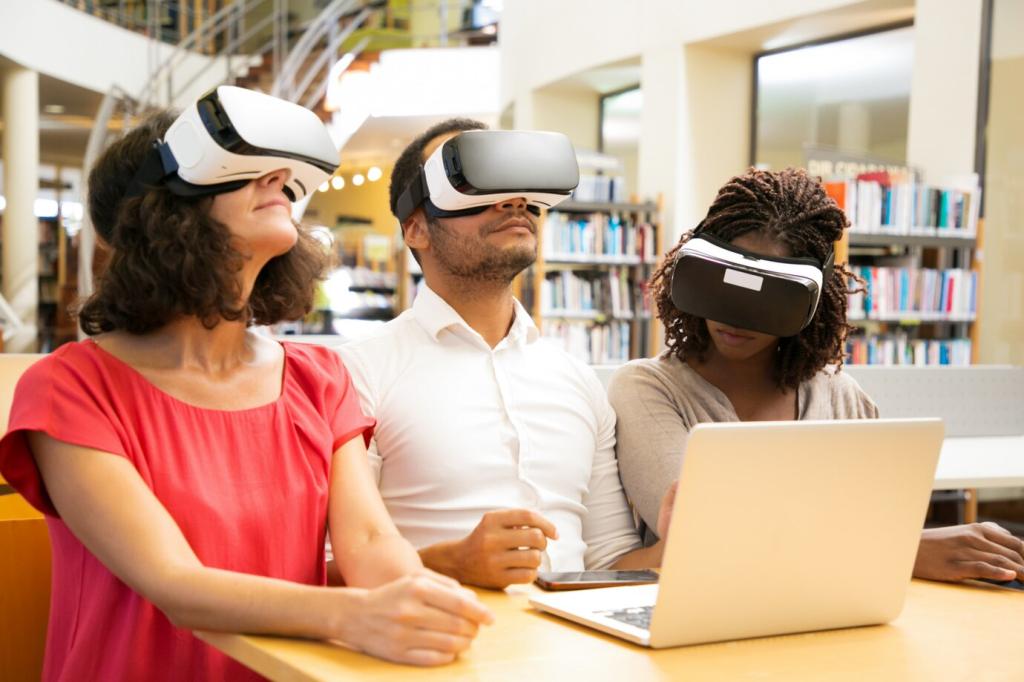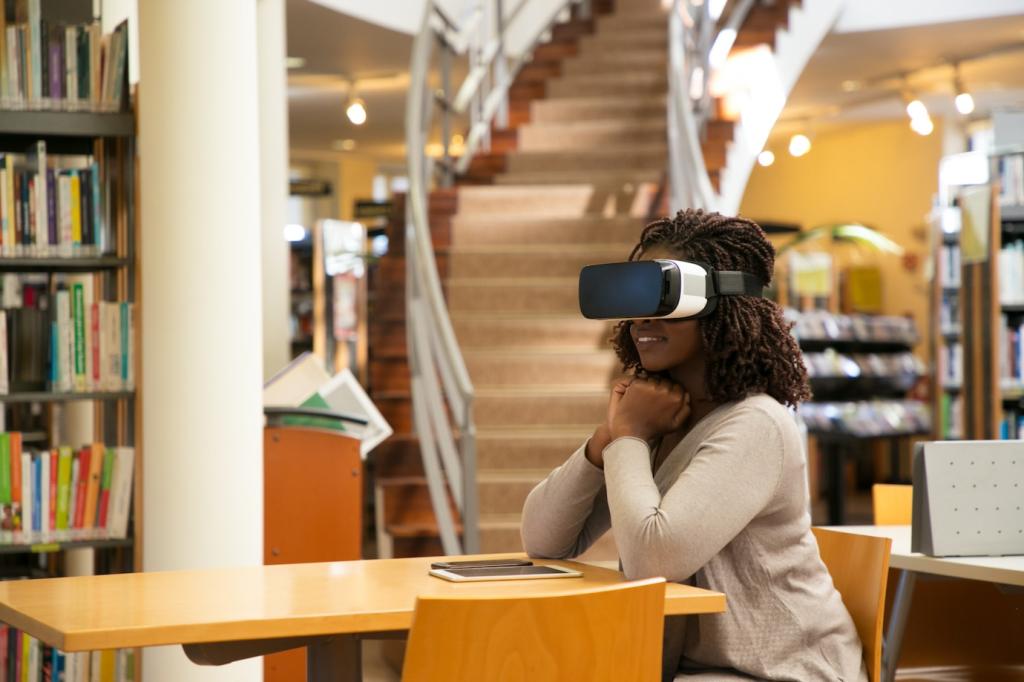Virtual Reality Applications in Vocational Education
Selected theme: Virtual Reality Applications in Vocational Education. Step into an inspiring, hands-on future where learners practice complex skills safely, confidently, and repeatedly in immersive environments that feel real, spark curiosity, and turn training into memorable, job-ready mastery. Join us, share your experiences, and subscribe for more.

Why VR Transforms Vocational Learning
In virtual reality, trainees move beyond diagrams and lectures into situations that mirror the job floor. They practice procedures step by step, receive immediate feedback, and build muscle memory. Repetition becomes engaging, and mistakes turn into safe learning moments rather than costly setbacks.
Why VR Transforms Vocational Learning
High-stakes tasks in healthcare, construction, and electrical trades can be simulated without real-world hazards. Learners explore worst-case scenarios in a controlled environment, understand consequences, and rehearse correct responses until they become instinctive, all while protecting people, equipment, time, and budgets.
Use Cases Across Trades and Programs
From triage to sterile technique, VR guides students through dynamic patient scenarios that adapt to their choices. Learners practice communication, ethics, and procedure under pressure, then rewind, review, and try again until clinical standards and safety protocols feel natural and automatic.
Use Cases Across Trades and Programs
Simulated weld beads, circuit diagnostics, and airflow balancing become repeatable labs. Trainees visualize invisible forces like heat zones and voltage, test configurations, and witness failures safely. When they reach physical labs, their hands already know the rhythm, and success rates rise.
Use Cases Across Trades and Programs
Students rehearse kitchen workflows, menu timing, and front-of-house service with realistic pressure and guest variability. They learn to prioritize tasks, prevent errors, and manage stress, transforming chaotic rushes into predictable patterns and measurable performance improvements across shifts and stations.
Clear Objectives and Observable Outcomes
Start with job tasks and competency frameworks. Define what success looks like, how it will be observed, and which errors matter most. Align every interaction to measurable outcomes so practice translates directly into demonstrable workplace capabilities and reliable assessment evidence.
Branching Scenarios and Feedback Loops
Design choices that matter. When learners miss a step, show consequences, then offer guided correction. Use branching paths to reinforce judgment and timing, not just rote procedure, and close each session with actionable feedback tied to rubrics and next-step recommendations.
Comfort, Access, and Inclusivity
Minimize motion sickness through thoughtful locomotion, provide seated and standing options, and support color contrast and captions. Offer alternative controls for different abilities, ensuring every learner benefits from immersive practice without discomfort or exclusion from essential training experiences.


Stories from the Training Floor
Emma froze during her first mock code, overwhelmed by alarms and urgency. After three VR sessions, she led the sequence calmly, anticipating medication, compressions, and communication. Her clinical preceptor noticed the shift immediately: steadier voice, faster decisions, and safer outcomes.
Stories from the Training Floor
Jared struggled to isolate intermittent faults. In VR, he practiced tracing signals, listening for subtle cues, and testing hypotheses. Mistakes cost nothing but time, and patterns clicked. Back in the shop, his diagnostic flow sharpened, saving hours and earning customer trust faster.
Implementing VR on a Realistic Budget
Hardware Paths That Fit Your Context
Choose between standalone headsets for portability, PC-tethered systems for fidelity, or mixed fleets for flexibility. Pilot with a small set, monitor utilization, and scale where impact is highest. Involve IT early to streamline updates, storage, and hygiene protocols.
Content: Off-the-Shelf or Custom-Built
Evaluate ready-to-use scenarios for rapid adoption, then identify gaps unique to your program. Partner with developers or empower faculty to co-create modules. Reuse assets across courses and maintain a content roadmap that tracks updates, alignment, and emerging industry requirements.
Training Faculty and Rolling Out
Offer micro-workshops that pair pedagogy with hands-on practice. Provide quick-start checklists, student orientation scripts, and troubleshooting guides. Launch with a single competency, gather feedback, iterate quickly, and invite colleagues to observe. Share results and subscribe for templates and updates.

This is the heading
Lorem ipsum dolor sit amet, consectetur adipiscing elit. Ut elit tellus, luctus nec ullamcorper mattis, pulvinar dapibus leo.

This is the heading
Lorem ipsum dolor sit amet, consectetur adipiscing elit. Ut elit tellus, luctus nec ullamcorper mattis, pulvinar dapibus leo.
Ethics, Inclusion, and Wellbeing in VR Training
Collect only what you need, store it securely, and explain how performance data will be used. Offer opt-in choices and anonymized reports. Transparency reduces anxiety, builds trust, and encourages learners to practice honestly without fear of surveillance or misuse.
Ethics, Inclusion, and Wellbeing in VR Training
Ensure fair scheduling, device availability, and support. Provide alternatives when health or disability requires it, and design with universal principles. Equity is not an afterthought; it is the path to better outcomes and a stronger, more diverse workforce pipeline.



Haptics and Advanced Simulation
From subtle vibrations to force feedback, haptic devices will teach pressure, texture, and resistance. Imagine feeling a perfect weld or the snap of a connector, translating virtual repetitions into remarkably accurate, transferable hands-on competence on the job.

AI-Driven Coaching
Adaptive guidance analyzes motion, timing, and decision patterns, then delivers just-in-time prompts. Students receive individualized practice plans, and instructors gain visibility into trends. Share your wish list for coaching features, and subscribe to follow tests, trials, and results.

Remote Collaboration and Shared Labs
Distributed teams will meet inside shared simulations, observe procedures from multiple angles, and annotate in real time. This expands access for rural campuses and apprenticeships, while creating rich peer learning moments that mirror modern, connected workplaces.
